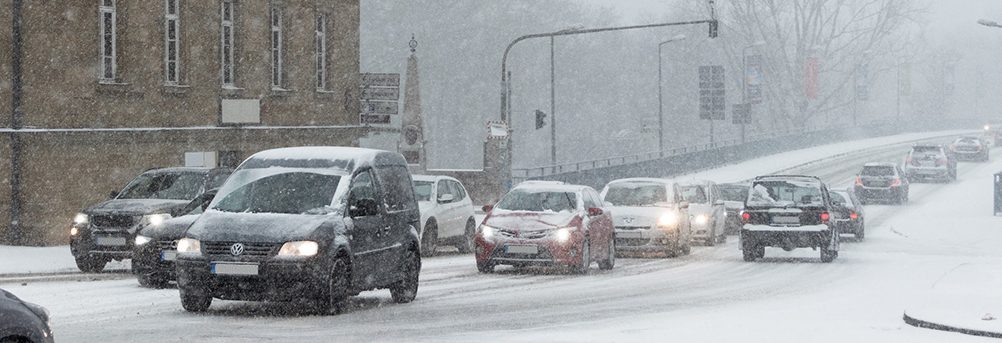
Defensive Driving: Staying Safe on the Road
The National Safety Council reported 39,404 deaths and 4.5 million injuries due to motor vehicle crashes in 2018. According to the World Health Organization (WHO), vehicle accidents claim 1.35 million lives globally, each year. Taking a defensive driving course can reduce your chances of being in a car accident, protecting yourself and others.
Defensive driving is defined as “driving to save lives, time, and money, in spite of the conditions around you and the actions of others.” In other words, a defensive driver makes quick decisions that reduce the chance of an accident. This requires awareness of road conditions and predicting the actions of other drivers, instead of only reacting to events.
Some factors that increase the risk of road accidents are lack of driver experience, fatigue, and substance impairment. In the Northern states, ice accumulation and unpredictable weather also increase the risk of accidents during winter.
Benefits of Defensive Driving
The following are some benefits of defensive driving training listed by the NSC:
- Facing fewer liabilities and costs due to vehicle accidents.
- Better insurance terms and lower premiums.
- Keeping employees safe, which also protects brand image and improves productivity.
There are two important requirements for defensive driving: knowledge about risks, and the awareness to detect them on time. A defensive driver can spot a potential accident before it happens, and anticipate vehicle movements based on physical principles. This way, the driver can decide the best course of action to avoid crashing. Of course, quick decisions are important, since preventing an accident can be a matter of seconds.
Driver safety also involves prevention, and your vehicle should not be driven in a way that threatens other motorists. You cannot assume that others on the road will drive defensively. Thanks to information technologies, online driver training has now become a viable option.
What Causes the Most Vehicle Collisions in the US?
According to the US Department of Transportation (USDOT), speeding caused 9,378 fatalities in 2018. In the past two decades, speeding has caused around 33% of motor vehicle fatalities. Driving at a high speed is even more dangerous in the presence of road hazards like bad weather, ongoing repairs, or poor lighting.
Distracted driving is also a major risk factor, which was involved in 2,841 fatalities in 2018. According to TELUS WISE, distractions such as texting have the following consequences:
- Reaction time slowed down by 35%
- Accident risks increased by 500%
- 50% decrease in awareness of surroundings
The USDOT found that drivers take their eyes off the road for 5 seconds on average when responding to a text message. This may seem like a short time, but at 55 mph; it is like driving across a football field with your eyes closed.

Impaired driving increases the risk of a collision. Alcohol was involved in 10,511 vehicle fatalities in 2018, which is around 28 lives per day. The USDOT found that vehicle crashes increase exponentially when the blood alcohol concentration (BAC) exceeds 0.08 grams per deciliter (g/dL). However, in 1,878 of the alcohol-related fatalities for 2018, the driver was below this BAC.
As previously mentioned, icy roads and unpredictable weather are added to the risk factors in winter, especially in the Northern states. Geico Insurance found that vehicles take 10 times longer to stop on icy roads, compared with dry roads. Also, weather-related crashes cause more fatalities than weather disasters, according to The Weather Channel.
Defensive Driving: 3 Quick Tips
The best way to improve your skills behind the wheel is with a defensive driving course. However, the following tips can be of great help when driving:
1) Anticipation: All vehicles on the road have momentum, which means they need time to change direction or brake. Therefore, you must predict the actions of others to drive safely. Just reacting to the movements of other vehicles may not be enough to avoid an accident.
2) Monitoring your speed: More speed means more momentum, which means you have less time to avoid a crash. Also, fatal collisions are more likely when speeding, as reported by the USDOT. The risk of losing control is even higher when a road contains snow or ice.
3) Eliminating distractions: TELUS WISE conducted an extensive study of how distractions can reduce driving ability. Some examples of distractions are messaging, answering phone calls, and even changing songs.
Concluding Remarks
Defensive driving is an effective way to avoid injury, protect private property, and even save lives. Companies can implement driver safety training to reduce the risk of crashes while becoming eligible for better insurance plans. This is a socially responsible and ethical decision, which can also help prevent penalties and legal action.
The USDOT has found that speeding, distracted driving, and substance impairment are major risk factors when driving. Unfortunately, these risks can also affect motorists who practice safe driving, since the road is shared. Snow and ice accumulation must also be considered, especially in the northern US and Canada. A defensive driver is aware of these risks and knows how to minimize the chance of an accident when facing them.






























